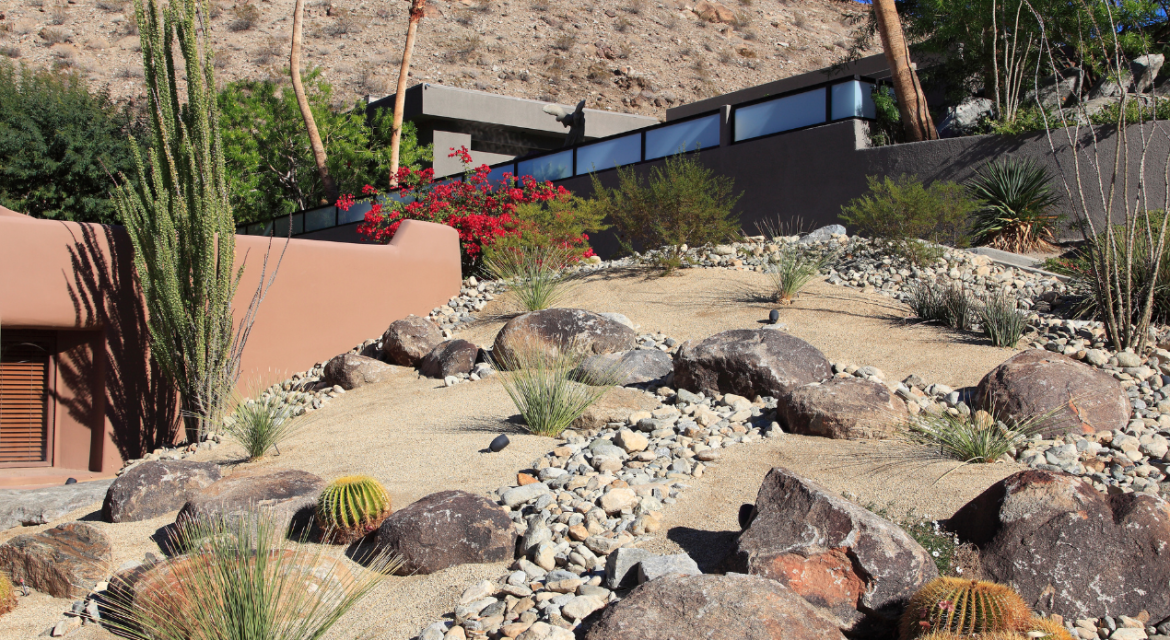Tips and Ideas for Designing and Maintaining a Xeriscape Garden
Xeriscaping is a landscaping technique that focuses on creating a beautiful, water-efficient garden that is sustainable and low-maintenance. By using plants that are adapted to the local climate and soil conditions, and by minimizing the use of water and other resources, xeriscaping can help you create a beautiful and sustainable landscape that requires less maintenance and upkeep. In this blog, we’ll explore the basics of xeriscaping, including tips for design, plant selection, and maintenance.
Design
When designing a xeriscape garden, it’s important to consider the natural features of the site, such as the soil type, slope, and exposure to sunlight and wind. By working with the natural features of the site, you can create a landscape that is not only beautiful, but also sustainable and water-efficient. Xeriscape gardens often incorporate elements such as rocks, mulch, and paths to create a visually appealing and low-maintenance landscape.
Plant Selection
One of the key principles of xeriscaping is to use plants that are adapted to the local climate and soil conditions. By using native plants and drought-tolerant species, you can create a garden that is both beautiful and water-efficient. Some popular xeriscape plants include succulents, cacti, lavender, yarrow, and ornamental grasses. When selecting plants, it’s important to consider their water and light requirements, as well as their tolerance to pests and diseases.
Maintenance
One of the main benefits of xeriscaping is that it requires less maintenance than traditional landscaping. By using plants that are adapted to the local climate and soil conditions, you can create a garden that requires less water, fertilizer, and pesticides. However, it’s still important to maintain your xeriscape garden by pruning and weeding regularly, and by monitoring the soil moisture levels to ensure that your plants are getting the water they need.
Xeriscaping is a sustainable and water-efficient landscaping technique that can help you create a beautiful and low-maintenance garden. By using plants that are adapted to the local climate and soil conditions, and by minimizing the use of water and other resources, xeriscaping can help you create a landscape that is not only beautiful, but also sustainable and environmentally friendly. If you’re looking for a way to create a beautiful garden while conserving water and other resources, xeriscaping is definitely worth considering.





